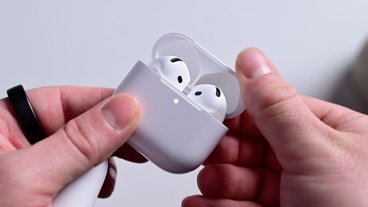It was known that Apple has Zeiss lenses for correcting vision while wearing the Apple Vision Pro, but there was a surprise third option — Monovision. Here's what it means, what Apple can't correct for, and how to tell if you need to select it when you buy a headset.
Apple requires all users to confirm that they don't need glasses or contacts, there's no option to skip the step. However, a third option presented itself during the order process, asking the user if they had correction for Monovision.
What is Monovision?
Monovision is a vision correction technique that corrects the user's dominant eye for distant vision. The correction can be through refractive surgery, lens implants, or contact lenses. It's generally used for older users, whose eye variance increases over time.
The non-dominant eye is left nearsighted. This allows for clearer vision at any distance, good long range, and good close vision, but not 20/20 in every case.
How does Apple Vision Pro deal with Monovision?
In the case of the Apple Vision Pro, the inserts need to be tailored to counter-correct surgical distance vision correction with lensing. If you select the surgical correction of Monovision, there is a follow-up series of questions to determine what combination of lenses is required to use the unit.
Users with contacts to correct monovision should remove them and use Zeiss inserts based on the available comprehensive prescription.
Pricing varies based on what you need for correction, and it's not clear if in-store will have all the lenses required for any order.
Other vision issue concerns with Apple Vision Pro
A support document spells out that users who have prism prescriptions aren't served at this time. Prism prescriptions are used in the case of neurological vision cuts and other conditions that limit the user's vision field.
Apple also makes it clear that there may be other issues.
"Some medical conditions, such as those involving eyelid drooping, changes in eye alignment (including strabismus or lazy eye), or uncontrolled eye movements (including nystagmus) might make it difficult for Apple Vision Pro to properly detect your eyes. This might impact the visual experience."
Apple makes it clear that the experience can be tailored. Instead of using eye tracking, users can customize Accessibility features for the headset to watch your wrist, head, index finger, or voice for navigation.
 Mike Wuerthele
Mike Wuerthele




-xl-m.jpg)


-m.jpg)






 Chip Loder
Chip Loder
 Thomas Sibilly
Thomas Sibilly
 Wesley Hilliard
Wesley Hilliard
 Christine McKee
Christine McKee
 Amber Neely
Amber Neely
 William Gallagher
William Gallagher
 Malcolm Owen
Malcolm Owen








6 Comments
agree Lmasanti and I appreciate that Apple is thinking about people with disabilities with this device.
Huh! Normal sight is required and if your sight can't be corrected to normal, then it would be similar to not being able to drive a car if you can't make the cut. I fall into that category I can't drive without glasses.
I really have to correct the mis statement regarding mono vision. Whilst it’s true that it is one eye distance one eye near sighted it’s NOT true that it is always one particular way around, frankly it depends on circumstances. In my case I am short sighted, and then in one eye I had first a detached retina then cataract. As such I had to have a fixed focus replacement lens and decided to go mono and have that eye set for distance vision. As it happens it’s NOT my dominant eye. In a few years time when I have to have cataract surgery on the other eye as that eye didn’t have a detached retina I can have one of the better lenses that have multiple focus - you can’t use these in an eye that had a detached retina for complex reasons.